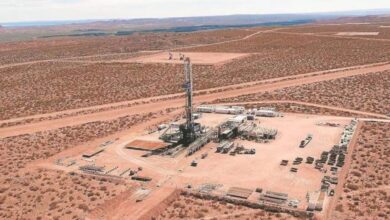Antarctica heats up
Each time climate change gives us more evidence that it is a real phenomenon, unlike what great figures, such as the president of Brazil, Jair Bolsonaro, think. We recently reported that January was the hottest month ever recorded, exceeding the same month of 2016, by 0.03 ° C more.

View of the Antarctic. / Photo: Pexels – Reference Image
LatinAmerican Post | Laura Viviana Guevara Muñoz
Listen to this article
Leer en español: La Antártida se calienta
Well, in the last days another record was released that was met thanks to the high temperatures. As revealed by the Argentine Meteorological Service (SMN), which is located in the north of the Antarctic peninsula, the temperature reached 18.3 ° C on February 6. This is one of the highest temperatures recorded, since on March 24, 2015 it was reported that it reached 17.5 ° C.
#Antártida | Nuevo récord de temperaturas
Este mediodía la Base #Esperanza registró un nuevo récord histórico (desde 1961) de temperatura, con 18,3°C. Con este valor se supera el récord anterior de 17,5°C del 24 en marzo de 2015. Y no fue el único récord… pic.twitter.com/rhKsPFytCb
— SMN Argentina (@SMN_Argentina) February 6, 2020
In addition, another of the Argentine bases of the SMN, also registered one of the highest temperatures registered in the month of February since 1971. The base “Marimba”, registered 14.1 ° C, thus exceeding the record of February 24, 2013 , day 13.8 ° C was reached.
La Base #Marambio también registró la temperatura más alta para un de mes de febrero desde 1971. Alcanzó 14,1°C y superó los 13,8°C del 24 de febrero de 2013. pic.twitter.com/PsgpMFrHyc
— SMN Argentina (@SMN_Argentina) February 6, 2020
However, the World Meteorological Organization recalled that Antarctica reached 19.8 ° C when the temperature "was taken on Signy Island in January 1982." To the above is added that during the last 50 years, Antarctica “is one of the regions that is warming faster, with an increase of 3 ° C, causing the amount of melted ice to multiply by six between 1979 and 2017 ”, as the UN remembers.
The above is dangerous, not only for the species that live in this part of the world, but there is one of the largest glaciers in the world, called Thwaites or also the glacier of the "Day of Judgment", because of its large size. As BBC explains, it is not part of any country, and its extension is almost the same as that of the United Kingdom.
Read also: Climate breakdown is increasing violence towards women
Thanks to this, it is said to be responsible for four percent of the global rise in sea level. The worrying thing is that due to the increase in temperatures, the glacier is melting faster than previously thought, and due to its size it could increase the seas around the world by more than half a meter, according to the same medium.
To understand, why the glacier was melting so fast, researchers at the University of New York, along with the British Antartic Survey, drilled the glacier more than 600 meters in order to measure the temperatures of the ice sheet. The researchers found that the ice reached 0 ° C, "more than 2 ° above the freezing temperature in the Antarctic region," according to La Nación.
According to the glaciologist of the University of New York, David Holland, and in statements to The Washington Post, although there is still much to investigate about this fact, there is one clear thing: “warm water is causing the Thwaites glacier it melts and parts of it come off".
More high temperatures
Not only Antarctica experienced high temperatures, because according to several Argentine media, the province of Tierra del Fuego, located in southern Argentina, had to restrict public activity, when the temperature reached 30.8 ° C. The province, which is prepared to withstand several months with temperatures below zero, exceeded 20 ° C, a figure that is usual in the summer seasons.




